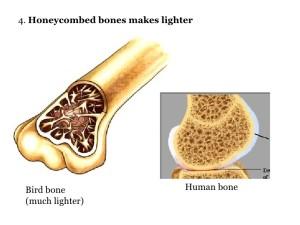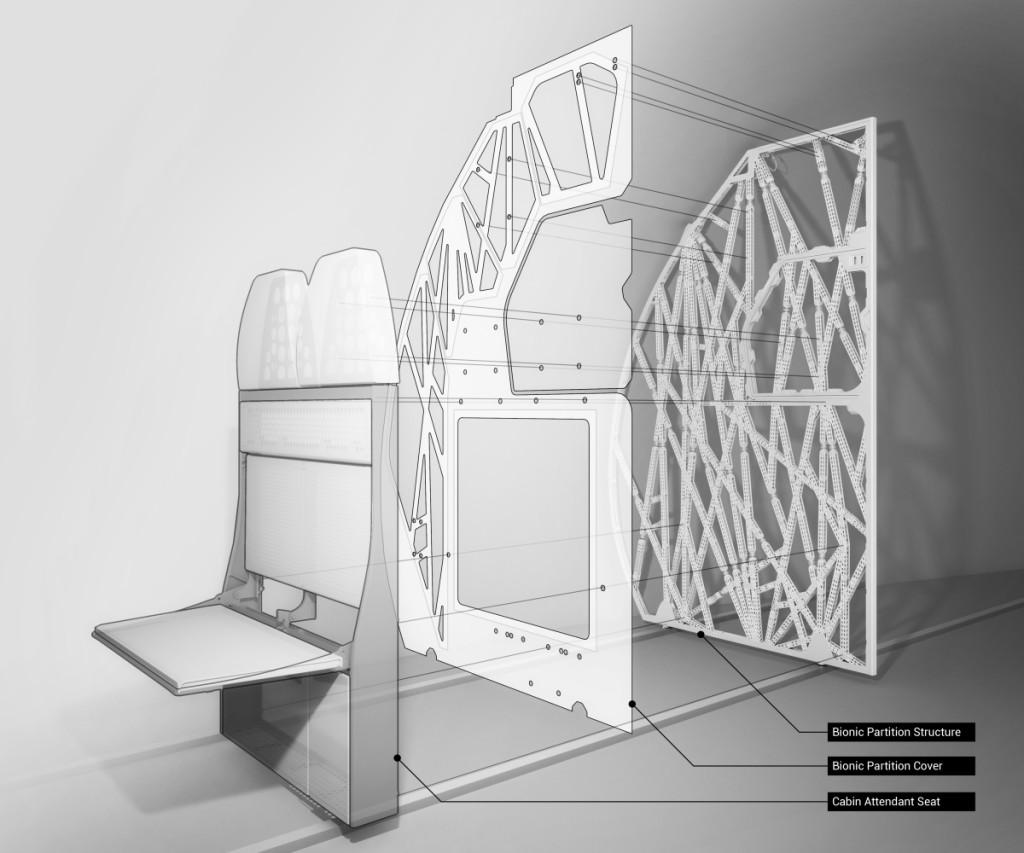 There are two things that commercial airplane designers love more than anything: The ability to increase the amount of space inside of the cabin so they can squeeze one or two more paying customers into their airplane, and the ability to reduce the weight of the plane so they can save money while squeezing one or two more paying customers into their airplane. Aircraft designers have always been quite good at using every spare inch of space that they can, and modern CAD software is making that easier for them than ever before. Software now exists that can help airplane designers optimize the structural design of aircraft to use the absolute minimum material possible to create safe and durable structures while taking up as little usable space as possible.
There are two things that commercial airplane designers love more than anything: The ability to increase the amount of space inside of the cabin so they can squeeze one or two more paying customers into their airplane, and the ability to reduce the weight of the plane so they can save money while squeezing one or two more paying customers into their airplane. Aircraft designers have always been quite good at using every spare inch of space that they can, and modern CAD software is making that easier for them than ever before. Software now exists that can help airplane designers optimize the structural design of aircraft to use the absolute minimum material possible to create safe and durable structures while taking up as little usable space as possible.
At Autodesk University 2015 held this week in Las Vegas the company showed off the results of their collaboration with Airbus to use auto-generative design to create what they’re calling the world’s largest 3D printed airplane cabin structural component. Using Autodesk generative design algorithms, Airbus created a new dividing wall that separates the main passenger seating area with the plane’s galley and flight attendant jumpseats. Airbus called the new dividing wall a “bionic partition” because its internal structure mimics biological structures created in nature.
Generative design, or auto-generative design as it is sometimes called, is a structure or object that is designed entirely by computer software to mimic natural cellular and bone structures. How it works is actually pretty amazing; the user, or designer, simply enters in a series of constraints and structural necessities, for instance how much of a load the object needs to be able to support or what the object needs to do. Once the software has that data it uses a cloud-based algorithm that computes huge amounts of alternative designs until it finds one that meets all of the desired structural requirements using the least amount of material possible to do so.
Not only does generative design result in stronger and more structurally sound objects, but they use less material so the objects are much lighter than traditionally designed objects. If the object being generated is an architectural component, then they often end up saving considerable space as well. Obviously design technology like this is perfect for businesses that place a high value on reducing weight and materials usage, but it is also ideal for a wide range of industries. Auto-generative design can be used to design everything from furnishings to homes to medical implants designed and optimized to be as nonintrusive as possible based on individual patients’ bodies.
“Generative design, additive manufacturing and the development of new materials are already transforming the shape of manufacturing and innovative companies like Airbus are showing what is possible. This is not just an interesting hypothetical experiment – this is a fully functioning component we can expect to see being deployed in aircraft in the very near future. We’re looking forward to further collaboration with Airbus on new components and designs for current and future aircraft,” said Autodesk chief technology officer Jeff Kowalski.
The concept is based on how nature creates structures that are not overly complicated and maximize material and composition. If you think of the inside of a human bone, it has cavities, gaps and holes that may seem random, but they actually help the human body perform better. A completely solid bone would be twice as heavy, putting more strain on the body’s musculature while also paradoxically offering less durability. A solid bone will snap when exposed to certain pressures, but a bone with internal porous gaps can survive greater pressures because the gaps act as structural supports that push against the pressure rather than simply crack.
The final design of the “bionic partition” is essentially impossible to create using traditional manufacturing and fabrication technologies. Not only does it have a large, organic shape that would be hard to cast or machine, but the wall also has small-scale micro geometries that provide extra structural support and strength while reducing its weight and material use. Airbus turned to 3D printing to create the structure using the large-scale Concept Laser M2 metal 3D printer with an advanced metal material from APWorks.
Airbus assembled the partition for the first time at the Autodesk University event, and confirmed that the final, assembled partition weighs 45% less than the current design. They estimate that using this new design process on their airplanes could save up to 465,000 metric tons of CO2 emissions every year. That is the equivalent of removing 96,000 cars from the road in the same time period. Airbus says that they will continue testing the Autodesk generative design process, and they could have components and parts made with the process available for commercial use as early as 2018. Let’s hear your thoughts on this wall in the Airbus 3D Printed Dividing Wall Forum on 3DPB.com.
Subscribe to Our Email Newsletter
Stay up-to-date on all the latest news from the 3D printing industry and receive information and offers from third party vendors.
Print Services
Upload your 3D Models and get them printed quickly and efficiently.
You May Also Like
Consolidation in AM: How 2025 Is Shaping the Industry’s New Normal
The first half of 2025 has been marked by a clear shift in the additive manufacturing (AM) industry. Companies are no longer just focused on developing new tech by themselves....
Etsy Design Rule Change Reduces Selection of 3D Printed Goods
Online marketplace Etsy has implemented a rule change requiring all 3D printed goods on the site to be original designs. The update to the site’s Creativity Standards states, ¨Items produced using...
U.S. Congress Calls Out 3D Printing in Proposal for Commercial Reserve Manufacturing Network
Last week, the U.S. House of Representatives’ Appropriations Committee moved the FY 2026 defense bill forward to the House floor. Included in the legislation is a $131 million proposal for...
Transforming From Tourist to Native: Duro CEO Michael Corr Explains Why the Company Rebuilt its PLM Software on AI
In these early innings of the AI boom, many market analysts have expressed concern that AI spend has gotten too far ahead of the technology’s proven ability to deliver significant...




































